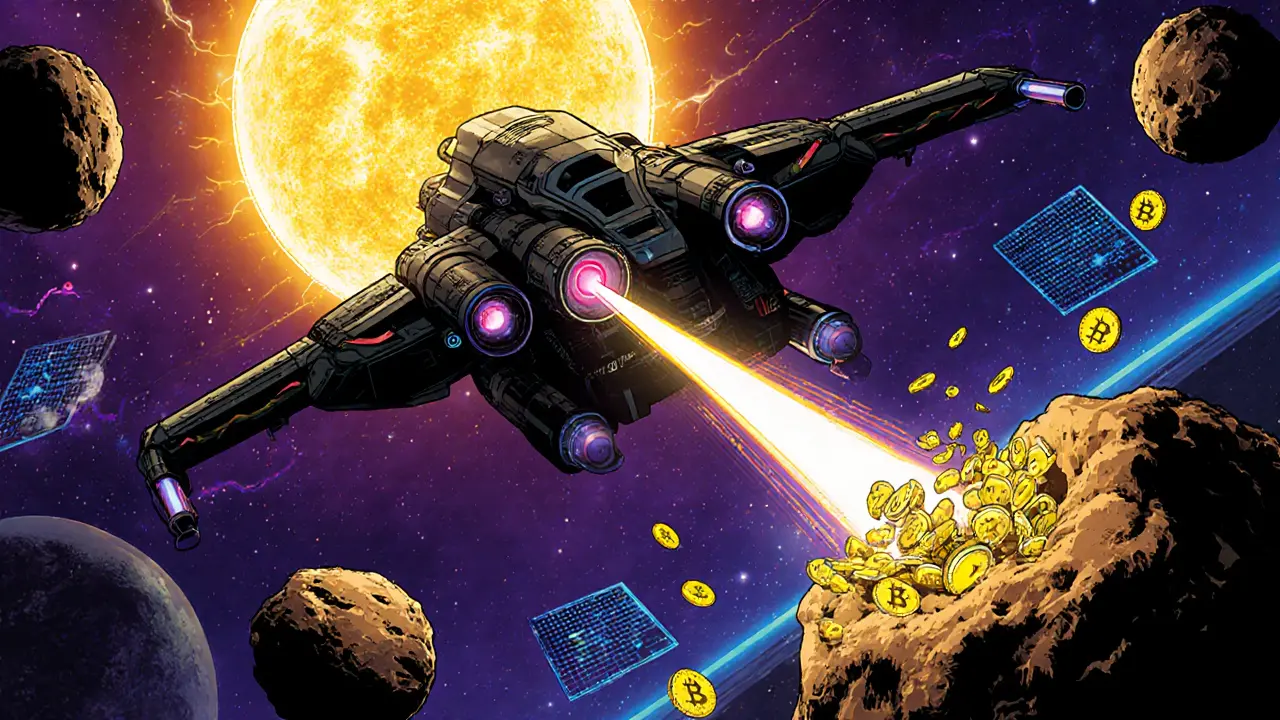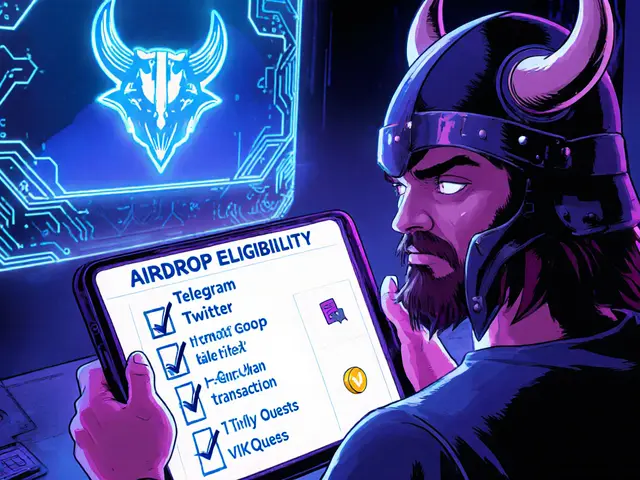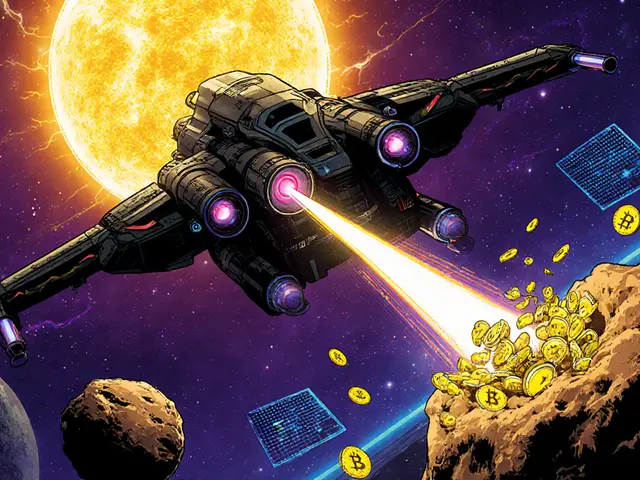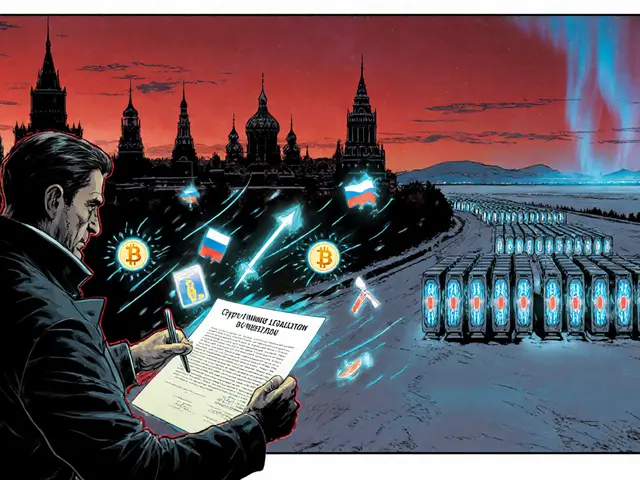- Home
- Cryptocurrency
- Cometh (MUST) Crypto Coin Explained: How It Works, Price & Risks

Cometh (MUST) Crypto Coin Explained: How It Works, Price & Risks
MUST Token Price Tracker
Current Price
$0.86
+2.3%
Last updated: Just now
Supply Information
Total Supply: 1,000,000
Circulating Supply: 101,391
Max Supply: 1,000,000
Exchange Prices
| Exchange | Price (USD) | 24h Volume (USD) | Status |
|---|---|---|---|
| CoinMarketCap (average) | $0.86 | $4.00 | Low Liquidity |
| Coinbase | $1.37 | $129.71 | Active |
| Crypto.com | $1.04 | $24.30 | Low Liquidity |
| ComethSwap (MUST/WMATIC) | $1.02 | $380.00 | Active |
Key Metrics
Market Cap: $86,000
Trading Volume (24h): $380
Price Volatility: High
Important Notes
MUST is a micro-cap token with very low liquidity. Prices may fluctuate significantly due to minimal trading volume. Always verify current prices before making trades.
Imagine piloting a digital spaceship that drifts around a virtual sun, pulling precious asteroids toward you while earning real crypto. That’s exactly the promise behind Cometh (MUST) crypto coin, a token that blends DeFi mechanics with NFT‑based gaming on Ethereum.
TL;DR
- Cometh’s MUST is an ERC‑20 token that fuels a space‑mining play‑to‑earn game.
- Total supply is capped at 1000000, with only ~10% circulating.
- Prices bounce between $0.86 and $1.37 across exchanges, reflecting very low liquidity.
- The ecosystem runs on the TUBE smart‑contract system and a secondary DUST token.
- Backed by Ubisoft, Shima Capital and others, but faces high volatility and Ethereum fee hurdles.
What Is the MUST Token?
Cometh (MUST) is an ERC‑20 utility token that powers the Cometh blockchain gaming platform. It acts as the primary currency for every in‑game transaction, from moving spaceships to buying upgrades and staking for rewards. The token’s strict limit of 1000000 tokens makes it deflationary by design - the fewer tokens in circulation, the higher the potential scarcity.
How the Game Works: NFT Spaceships and Smart Asteroids
The gameplay revolves around NFT‑based spaceships, minted as ERC‑721 and ERC‑1155 tokens. When you mint a ship, the blockchain records a random orbit around a virtual sun. Your ship’s path determines how quickly it can reach “smart asteroids” - programmed pieces of code that generate MUST when mined.
Players can pay a tiny fee - typically 0.001MUST per "pull" - to shift their vessel closer to richer asteroids. Upgrades like better drills, faster engines or crew NFTs boost mining efficiency, letting you squeeze more tokens from the same asteroid.
Token Economics: The TUBE, Staking, and DUST
All the economic magic lives in a set of smart contracts dubbed the TUBE. When you deposit MUST into the TUBE, you unlock three main benefits:
- Staking rewards - the contract auto‑yields additional MUST based on the amount you lock.
- Access to exclusive upgrades and rare spaceship NFTs that are otherwise unavailable.
- Generation of DUST counters, a secondary token that accrues over time. DUST can be swapped for new NFTs, creating a dual‑token economy that encourages long‑term holding.
The TUBE also distributes MUST to active players, ensuring that both gamers and early contributors earn a share of the token supply.
Institutional Backing and Strategic Investors
Cometh isn’t a fly‑by‑night project. It counts several heavyweight investors among its backers, including Ubisoft Entertainment SA, Shima Capital, IDEO CoLab Ventures, White Star Capital and Stake Capital Group. Ubisoft’s involvement is a big deal because it signals potential bridges between mainstream gaming titles and blockchain mechanics. While no concrete joint‑venture has been announced, the partnership opens doors for future integration.

Market Performance and Liquidity Realities
Price data paints a volatile picture. As of October2025, CoinMarketCap lists MUST at $0.8605, Coinbase shows $1.37, and Crypto.com hovers around $1.02‑$1.06. Such spread reflects the token’s micro‑cap status and extremely low daily trading volume - often under $130 across all platforms.
The primary trading hub is ComethSwap, a DEX that pairs MUST with WMATIC (wrapped MATIC). Daily volume for the MUST/WMATIC pair averages $380, accounting for roughly 40% of total activity. Low liquidity means even modest buys can swing the price dramatically, and price discovery remains challenging.
Price Comparison Across Exchanges
| Exchange | Price (USD) | 24‑h Volume (USD) |
|---|---|---|
| CoinMarketCap (average) | $0.86 | $4.00 |
| Coinbase | $1.37 | $129.71 |
| Crypto.com | $1.04 | $24.30 |
| ComethSwap (MUST/WMATIC) | $1.02 | $380.00 |
Technical Infrastructure: Ethereum’s Blessing and Burden
The entire Cometh universe lives on Ethereum. This gives the platform strong security and broad developer support, but also means every action - moving a ship, staking MUST, minting NFTs - requires ETH for gas fees. During network congestion, transaction costs can climb above $10, discouraging casual gamers and new entrants.
So far, the team has not announced any layer‑2 solution or migration to a cheaper chain. That decision could be a make‑or‑break factor for scaling the player base.
Risks, Challenges, and Outlook
Every crypto venture carries risk, and Cometh is no exception. Key concerns include:
- Liquidity crunch - tiny daily volumes mean price swings are common.
- Ethereum fee exposure - high gas can erode earnings from mining.
- Competition - other blockchain games (e.g., Star Atlas, Alien Worlds) offer similar play‑to‑earn models with larger marketing budgets.
- Adoption uncertainty - the ecosystem hinges on a growing player base that actually uses MUST for gameplay.
On the upside, the deflationary supply, institutional backers, and the novel dual‑token model give Cometh a unique edge. If the broader blockchain‑gaming market expands and Ethereum’s scaling solutions (like sharding or rollups) become mainstream, MUST could see a surge in utility and demand.
How to Get Started with MUST
- Set up an Ethereum‑compatible wallet (MetaMask, Trust Wallet, etc.).
- Buy ETH on a major exchange and transfer it to your wallet.
- Connect the wallet to ComethSwap (or another DEX that lists MUST).
- Swap ETH or WMATIC for the desired amount of MUST.
- Deposit your MUST into the TUBE to start staking, earn DUST, and unlock in‑game upgrades.
Remember to keep a small reserve of ETH for gas fees; otherwise, your transactions will fail.
Frequently Asked Questions
What is the total supply of MUST?
The MUST token caps at exactly 1000000 coins. About 101391 are currently circulating, which is roughly 10% of the total supply.
How does staking in the TUBE work?
You lock MUST into the TUBE smart contract. The contract auto‑generates staking rewards in MUST and creates DUST counters over time. Rewards scale with the amount and duration of your stake.
Can I trade MUST on centralized exchanges?
Currently, MUST is mainly available on decentralized platforms like ComethSwap. It is not listed on major centralized exchanges such as Binance or Coinbase Pro.
What role does Ubisoft play in the project?
Ubisoft is a strategic investor. Its involvement adds credibility and opens potential pathways for integrating Cometh’s gameplay into mainstream gaming titles, though no specific collaborations have been announced yet.
Is the game playable without owning MUST?
You can explore the UI without a wallet, but any meaningful interaction-moving ships, mining asteroids, or accessing upgrades-requires MUST for fees and staking.
Cormac Riverton
I'm a blockchain analyst and private investor specializing in cryptocurrencies and equity markets. I research tokenomics, on-chain data, and market microstructure, and advise startups on exchange listings. I also write practical explainers and strategy notes for retail traders and fund teams. My work blends quantitative analysis with clear storytelling to make complex systems understandable.
Popular Articles
16 Comments
Write a comment Cancel reply
About
DEX Maniac is your hub for blockchain knowledge, cryptocurrencies, and global markets. Explore guides on crypto coins, DeFi, and decentralized exchanges with clear, actionable insights. Compare crypto exchanges, track airdrop opportunities, and follow timely market analysis across crypto and stocks. Stay informed with curated news, tools, and insights for smarter decisions.






Looks like another micro‑cap that could pump, but also crash.
While the price swings are tempting, remember that low liquidity can turn a modest buy into a massive loss. It’s worth checking the gas fees before you dive in.
The premise of turning space mining into a crypto‑earned activity sounds exciting, yet it invites a deeper ethical interrogation. By gamifying resource extraction, the project risks normalizing the very exploitation it pretends to critique. Players are encouraged to spend real money on virtual ships, which in turn fuels a speculative market rather than any tangible good. The deflationary token model, while mathematically neat, masks the reality that most holders will never see genuine utility beyond in‑game perks. Moreover, the reliance on Ethereum’s congested network means that every action carries a hidden environmental cost. High gas fees can deter casual participants, creating an exclusivity that favors deep‑pocketed whales. The partnership with Ubisoft, although glamorous, may serve more as a marketing veneer than a substantive commitment to sustainable gaming. When a major studio backs a micro‑cap, the temptation to inflate hype can outweigh rigorous development. The dual‑token system, blending MUST with DUST, adds another layer of complexity that can confuse newcomers, leading them to make uninformed investments. In the broader context of blockchain gaming, many projects have prioritized token velocity over player experience, and Cometh appears no different. The risk of price manipulation is amplified by the minuscule daily volume; even a single large order can sway the market dramatically. Players seeking fun might inadvertently become speculative traders, chasing short‑term gains that evaporate with a single price dip. The moral hazard lies in presenting a “play‑to‑earn” model as a path to financial empowerment while the underlying economics remain fragile. If the ecosystem fails to attract a sustainable user base, the token could become worthless, leaving early adopters with losses. Ultimately, the excitement of piloting a digital spaceship should be weighed against the speculative nature of the token and the potential for environmental and financial exploitation. Prospective participants ought to consider whether they are supporting innovative gaming or merely fueling a risky financial experiment.
The token’s deflationary design is technically sound, and staking through the TUBE does provide clear incentives. However, it is essential to monitor the liquidity pools regularly to avoid unexpected slippage.
Yo, the whole MUST thing feels like another meme‑coin flex-high volatility, low depth, but the hype machine is still cranking.
Honestly, I’ve seen the price bounce around a lot; if you can ride the swings without panicking, it might be a fun side hustle.
Listen up, folks!! If you’re planning to jump in, make sure you’ve got ETH for gas, you’ve read the staking guide, and you understand that rewards aren’t guaranteed!!!
This project is a textbook example of how blockchain hype can be weaponized to lure unsuspecting investors into a vortex of perpetual loss. The marketing blurb about “space mining” is nothing more than a veneer to disguise the fact that the token has almost no real utility beyond being a speculative asset. Every time the price spikes, it’s merely a flash‑crowd of bots and opportunists flipping tokens, after which the market crashes back to the abyss. The liquidity is so thin that any meaningful trade will cause massive price distortion, essentially making the market a playground for whales. Moreover, the reliance on Ethereum’s congested network means you’ll be paying exorbitant gas fees just to move a token that could be worth pennies. The so‑called “institutional backing” is just a PR stunt; none of these investors have disclosed concrete roadmaps or deliverables. In short, this is a high‑risk gamble masquerading as a legitimate game, and anyone with a modicum of common sense should steer clear.
Don’t be fooled; MUST is just another pump‑and‑dump waiting to explode.
The structural deficiencies inherent in the MUST ecosystem render it unsuitable for prudent investment. Its volatility, coupled with negligible trading volume, undermines any semblance of price stability. Consequently, participation should be approached with extreme caution.
Sure, because nothing says “secure future” like a token that jumps from $0.86 to $1.37 on different exchanges.
It’s a risky ride, but some people actually enjoy the thrill of those ups and downs.
Looks like another low‑liquidity alt with typical crypto‑gaming buzz.
Not much to say, just another micro‑cap.
Wow!!! The drama around MUST is almost as intense as a sci‑fi movie!!!
In conclusion, the Cometh ecosystem presents a distinctive blend of gaming and decentralized finance. Prospective participants ought to conduct thorough due diligence, particularly regarding gas costs and token liquidity. Only through informed decision‑making can one hope to navigate the inherent volatility.